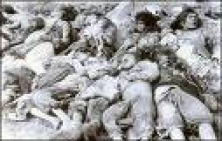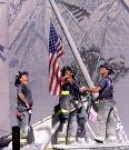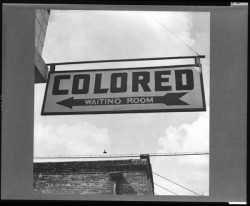HISTORY
Genocide/Holocaust

Rwanda
A more recent mass genocide example was the one in Rwanda. Rwanda’s two groups, the Hutu and the Tutsi, coincided perfectly fine until a little before 1956, when rebellions started amongst the Hutu to defeat the newly proclaimed more aristocratic Tutsi. Soon after a ceasefire ended their civil war, the Hutu President of Rwanda was killed and the Tutsi were blamed. The Hutu killing anyone that was Tutsi, was related to a Tutsi, or was against the cause to kill them. One defensive quote of the genocide was that the Hutu were “fuelled by fanatic dedication to a political cause”. Up to a million people were killed by the time it ended.
9-11

Columbine
One very well-known example of a school shooting was Columbine, in which Eric Harris and Dylan Klebold killed 12 students, a teacher, and themselves when they took guns into their school and started shooting at their peers. In this video we compiled from internet resources, we show pages of their journals where they planned out the entire day, April 20th, and what time everything would occur. We also show some of the aftereffects and what the school looked like later on in the day. The blocked out words, if you can read the pages, are the names of people in their class. A few lines from Eric's suicide not that can summarize basically why they did what they did was "...you're children who have ridiculed me, who have chosen not to accept me, who treated like I am not worth their time are dead. Surely you will try to blame it on the clothes i wear, the music I listen to, or the way I choose to present myself, but no. Am I insane? Let this massacre be on your shoulders until the day you die."
Execution Throughout History
-In China, a practice used up until the early 1900s was Ling Chi, during which a person would be cut on numerous parts of their body very slowly and drawn out, usually ending in beheading.
-In the 1980s and '90s in South Africa, people used neck-lacing as torture- filled up a tire with gasoline and put it around someone's neck.
-In Ancient Persia, people used scaphism; they would force-feed a tied up person milk and honey to the point where they had no control over their bowels, and then apply the surplus honey on the person and let the bugs eat him to death.
1937 Nanjing Massacre
This was a six-week period following the Japanese capture of the city of Nanjing (Nanking), the former capital of the Republic of China, on December 13, 1937. During this period, hundreds of thousands of civilians were murdered and 20,000–80,000 women were raped by soldiers of the Imperial Chinese Army. The massacre remains a contentious political issue, as various aspects of it have been disputed by some historical revisionists and japanese nationalists,who have claimed that the massacre has been either exaggerated or wholly fabricated for propaganda purposes.
Reign Of Terror
Robespierre was the mastermind of the Reign of Terror. He was the leader of the Committee of Public Safety, the executive committee of the National Convention, and the most powerful man in France. The Terror was designed to fight the enemies of the revolution, to prevent counter-revolution from gaining ground. Most of the people rounded up were not aristocrats, but ordinary people.
Segregation in America and the KKK

By the mid-20th century, racial tensions had escalated and demonstrations swelled for voting rights and school integration. Beginning with the Montgomery bus boycott in 1955 lead by Reverend Martin Luther King, conflicts between the Civil Rights movement and those who would fight to maintain "the white way of life" would lead to violence and, in some cases, murder. Between 1948 and 1965, over two hundred Black churches and homes in the Deep South were the target of bombings, and there was no more volatile city than Birmingham, Alabama. Black people were treated very unfairly and left both a phscial and emotional affect on them. The first KKK flourished in the South in the 1860s, then died out by the early 1870s. The second KKK flourished nationwide in the early and mid 1920s, and adopted the costumes and paraphernalia of the first Klan. The third Klan emerged after World War II. Their iconic white costumes consisted of robes, masks, and conical hats. The first and third KKK had well-established record of using terrosism, but historians debate how central that tactic was to the second KKK.